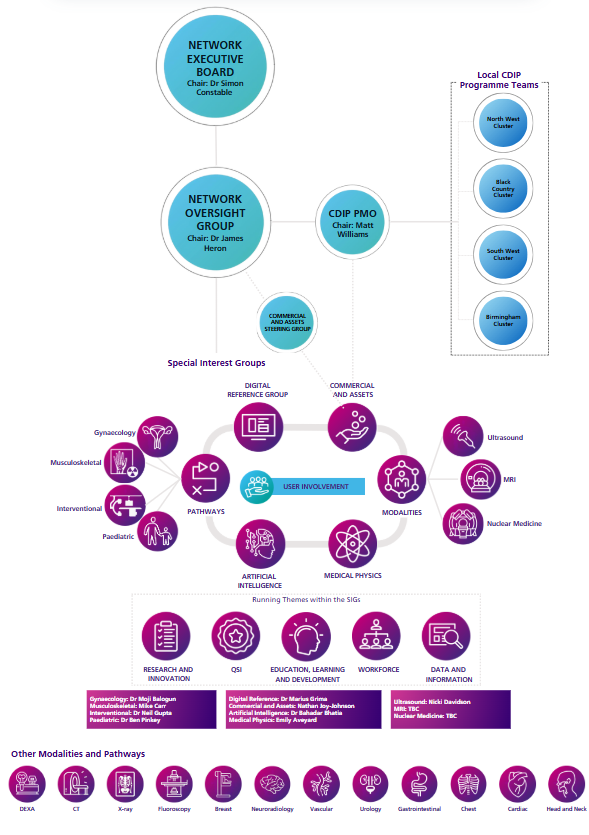Governance structure

Governance Structure
In order for this Network to support delivery in its more than complex operating environment, the Network required a framework that enabled it to:
- Maximise the skills, expertise, and resource from imaging experts in the West Midlands, including staff, management, stakeholders, service planning and service users.
- Build on established organisational links with national and regional service planning and IT and digital.
- Supports the provision of integrated person-centred care
- Maximise opportunities for joint working
- Learn from best practice
- Give the synergy and opportunity for collaboration and provide consistency to imaging services across the West Midlands
- Make best use of resources at a strategic and operational level through one overarching governance structure to ensure that the relevant groups or organisations that the Network should be accountable and responsible for were adequately represented within its governance structure.

With design and collaboration, it was agreed that the WMIN needed a structure which was clear, robust and reflected the purpose and objectives of the network, and that had the correct expertise at each level. The diagram above, sets out a clear direction for the Network and describes the two-way flow of activity and accountability.
The governance structure will:
- Provide clear lines of governance and accountability
- Ensure channels of communication are appropriate
- Create a strong, easy to understand brand and identity for the Network that NHS staff, stakeholders and service users can identify with, allowing cementing of good relationships
- Better represent current health needs so that appropriate, proactive, and robust responses are created
- Ensure that there is suitable expertise at every level of the Network, so that it
Continues to provide strong national strategic and operational leadership and advice across the system
- Not be constrained by organisational or professional boundaries
- Generate long-term as well as short-term solutions
- Base decision-making on expertise, data and intelligence
- Ensure that all relevant groups and organisations that the Network should be accountable to and responsible for, are adequately represented
The membership of both the Executive Board and the Oversight Board will be reflective of the geography of the West Midlands and each of its constituent organisations.
Special Interest Groups – Membership and purpose:
Representative of the mandate and priorties for the Network
- Specialists and experts in their field representing as many trusts as can be sourced
- Will form as issues arise and become dormant once their work is complete
- Their goal will be to provide a network consensus view of their work:
- May be harmonization of pathways (e.g. MRI protocols)
- May be formal recognition of pathways of care (such as paediatric imaging)
- May be a view of where we are as a region and what needs to develop or change to deliver a high-quality service